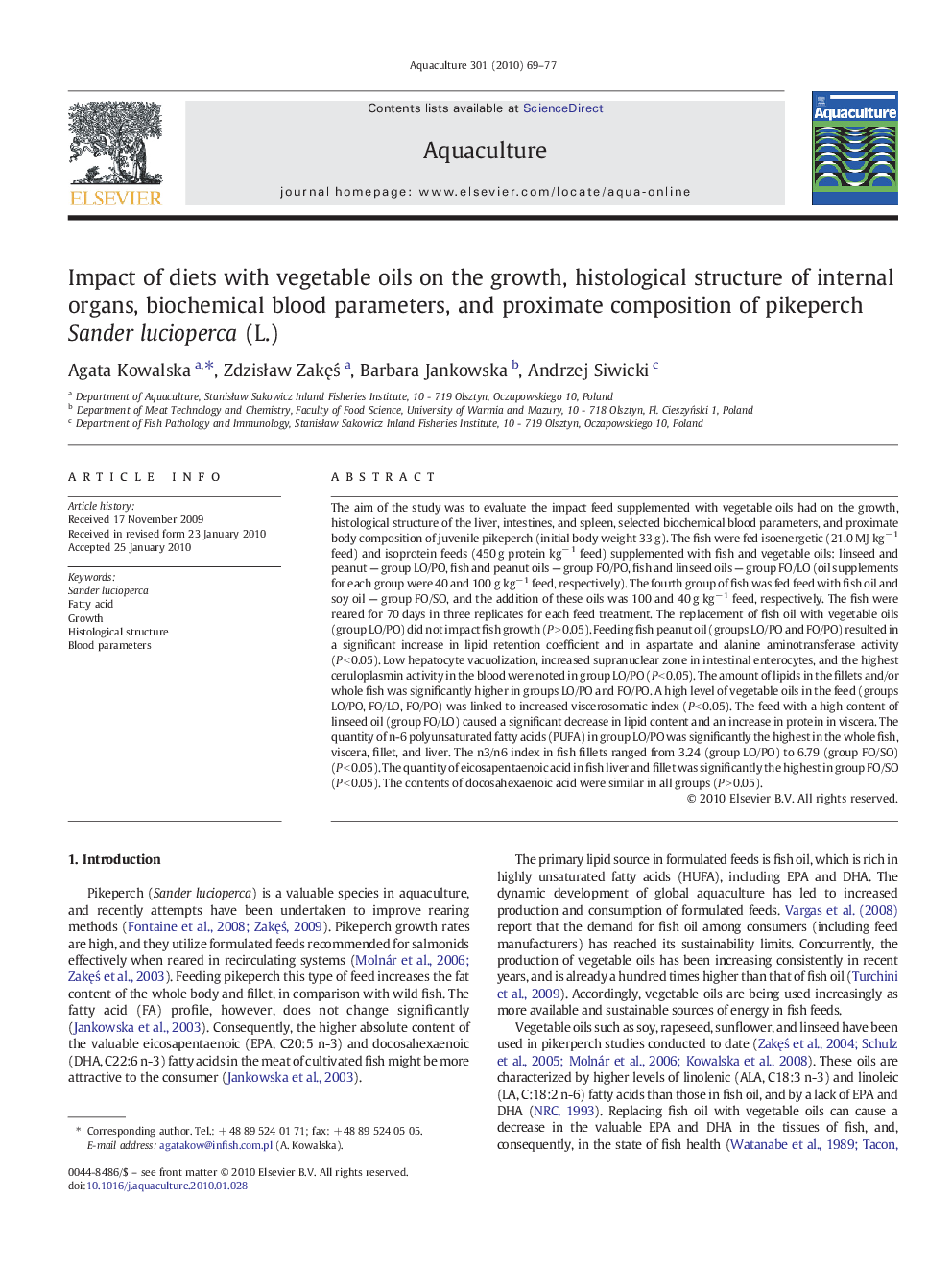| Article ID | Journal | Published Year | Pages | File Type |
|---|---|---|---|---|
| 2423468 | Aquaculture | 2010 | 9 Pages |
The aim of the study was to evaluate the impact feed supplemented with vegetable oils had on the growth, histological structure of the liver, intestines, and spleen, selected biochemical blood parameters, and proximate body composition of juvenile pikeperch (initial body weight 33 g). The fish were fed isoenergetic (21.0 MJ kg− 1 feed) and isoprotein feeds (450 g protein kg− 1 feed) supplemented with fish and vegetable oils: linseed and peanut — group LO/PO, fish and peanut oils — group FO/PO, fish and linseed oils — group FO/LO (oil supplements for each group were 40 and 100 g kg− 1 feed, respectively). The fourth group of fish was fed feed with fish oil and soy oil — group FO/SO, and the addition of these oils was 100 and 40 g kg− 1 feed, respectively. The fish were reared for 70 days in three replicates for each feed treatment. The replacement of fish oil with vegetable oils (group LO/PO) did not impact fish growth (P > 0.05). Feeding fish peanut oil (groups LO/PO and FO/PO) resulted in a significant increase in lipid retention coefficient and in aspartate and alanine aminotransferase activity (P < 0.05). Low hepatocyte vacuolization, increased supranuclear zone in intestinal enterocytes, and the highest ceruloplasmin activity in the blood were noted in group LO/PO (P < 0.05). The amount of lipids in the fillets and/or whole fish was significantly higher in groups LO/PO and FO/PO. A high level of vegetable oils in the feed (groups LO/PO, FO/LO, FO/PO) was linked to increased viscerosomatic index (P < 0.05). The feed with a high content of linseed oil (group FO/LO) caused a significant decrease in lipid content and an increase in protein in viscera. The quantity of n-6 polyunsaturated fatty acids (PUFA) in group LO/PO was significantly the highest in the whole fish, viscera, fillet, and liver. The n3/n6 index in fish fillets ranged from 3.24 (group LO/PO) to 6.79 (group FO/SO) (P < 0.05). The quantity of eicosapentaenoic acid in fish liver and fillet was significantly the highest in group FO/SO (P < 0.05). The contents of docosahexaenoic acid were similar in all groups (P > 0.05).
